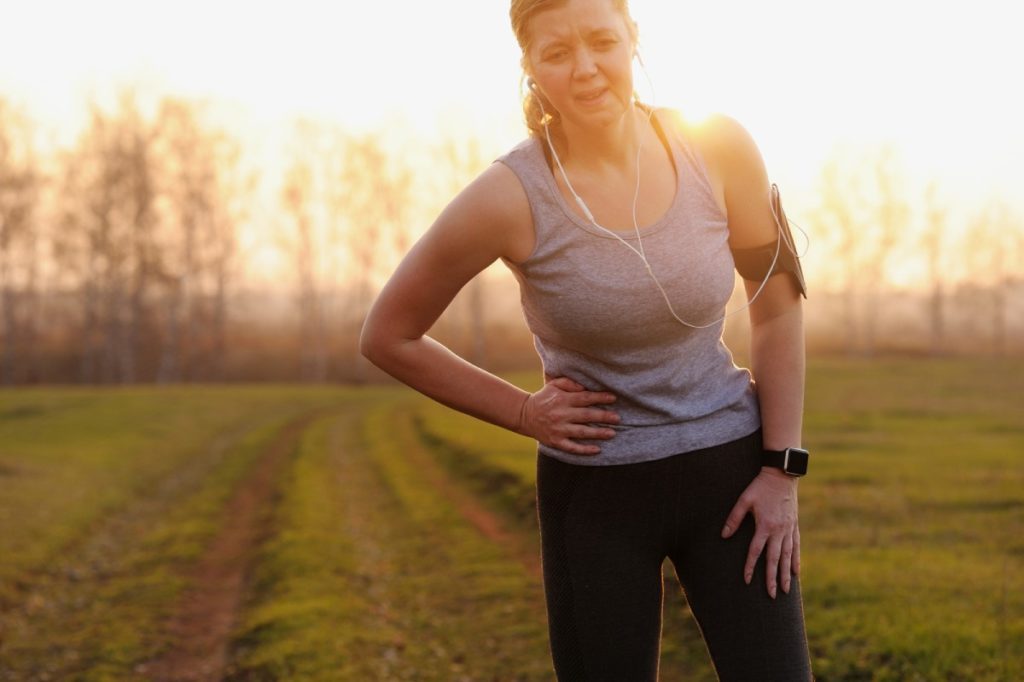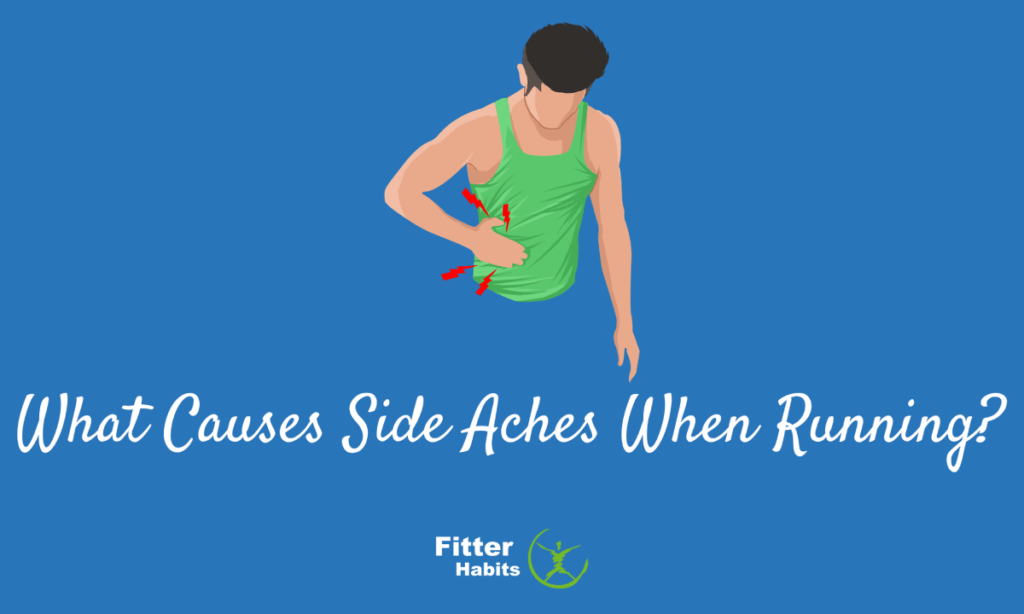Learn more about what causes side aches when running, and what you can do to stop this sharp pain-causing issue from hindering your workouts.
As runners, we do all that we can to set ourselves up for success before hitting the trail, road, or even the treadmill. e know how important it is to hydrate before a long run, we stretch to ensure that our ligaments and muscles are ready to take on the course ahead.
We do our best to stay up to date on the latest sports medicine research to improve our performance and avoid injury, and we know the importance of cross-training to ensure that our core muscles are strong and up to the challenge of our training routine. We know that running isn’t just about strong legs and great cardio fitness — it’s part of an overall health and wellness routine.
No matter how well-prepared you are, or how strong of a runner you are, it’s still likely that you’ll experience side stitches from time to time.
Contents
How Do You Know If You Have A Side Stitch?
Whether you know it as its technical name — exercise-related transient abdominal pain, or ETAP — or its common name, side stitch — you’ve likely been the victim of this all-too-common sharp, stabbing pain during a run.
When you experience side stitches, you might find yourself leaning to your left or right side as you run, trying to relieve the cramping. Perhaps you’ve tried to switch up your breathing pattern, or you’ve attempted to fix the pain by rehydrating with sugary sports drinks.
What works for side stitch relief differs from person to person, and many people find that what worked for a side stitch encountered during cardio exercise one time may not work so well the next time side cramps strike.
While the exact cause of ETAP is up in the air, exercise physiologists have some theories as to why side-aches are so common among runners.
Here, we’ll take a look at exactly what happens when you feel side pain in the abdominal muscles, why this happens to other athletes as well (including horseback riding enthusiasts and swimmers are especially susceptible), and what you can do to prevent this sharp pain from hindering an otherwise great run.
What Does A Side Stitch Feel Like?

Many runners are familiar with what a side stitch feels like. Often, runners get through the warm-up without a problem and feel a stabbing pain in the side of the abdominal cavity.
Sometimes, side aches are an annoyance that can shorten a long run. Other times, the sharp pain feels like a stab in the rib cage when exhaling, making it impossible to finish a workout.
Why Do Side Stitches Happen?
Many runners have noticed connections between pre-run and during-run behavior and side stitches, but sports medicine specialists are still not sure of the exact cause of this annoying issue.
Some theories on why side stitches occur include:
- High sugar intake — Studies have shown that sugary sports drinks may increase the likelihood of side stitches. For some runners, this idea is counterintuitive, as sports drinks tend to help them hydrate during a long run. If you rely on sugary sports drinks to hydrate and provide electrolytes and you experience side stitches, it might be worth trying another hydration option.
- Diaphragmatic tugging — Ever tried running on a full stomach? While most runners wouldn’t recommend it, running after a large dinner happens from time to time. Many runners find that running with a full stomach increases their likelihood of experiencing a side stitch. The diaphragm is an area of connective tissue and muscle that separates the abdominal area from the chest. Some sports medicine researchers believe that a full stomach pulls on the diaphragm, tugging on internal organs and creating side stitches.
- Postural issues — If you’ve ever seen a photo of yourself at the finish line of a particularly tough race, you know how fast your posture can change when you’re exhausted. When you experience fatigue, it’s likely that you’ll unknowingly change your running form (hunching your upper body, leaning to one side, arching your back). This can cause nerve irritation that may lead to side stitches.
Preventing Side Stitches: What You Need to Know
You know what side stitches are and why they may occur — now, what can you do to stop them from happening?
Check out these tips on keeping your next run side-ache free:
- Stay away from fruit juice and sugary sports drinks unless you need the electrolyte/sugar boost. If your run is less than an hour-long, plain water will be enough to keep you running strong.
- Use diaphragmatic breathing (breathing so that your belly expands when you inhale and contracts when you exhale) while you run, rather than breathing with your chest.
- Plan to run on an empty stomach, or leave at least two to three hours between eating a meal and going for a run.
Final Word on What Causes Side Aches When Running
Side stitches are uncomfortable, and researchers aren’t sure what causes them. Paying attention to when you experience side stitches can help you pinpoint your triggers so that you can better plan your runs to avoid the inconvenience of a side ache. Deep breathing, making smart fueling decisions, and hydrating with water instead of sugary beverages can all reduce the likelihood of side aches.
FAQs About What Causes Side Aches When Running
What does a side ache feel like?
For many people, a side ache feels like a sharp or stabbing pain in the abdomen.
What causes side aches?
Scientists aren’t sure, but side aches may be caused by diaphragmatic tugging, high sugar intake, and postural changes while running.
How can side aches be prevented?
Prevent side aches by staying away from sugary beverages when possible, breathing deeply while running, maintaining proper running form, and running on an empty stomach.



